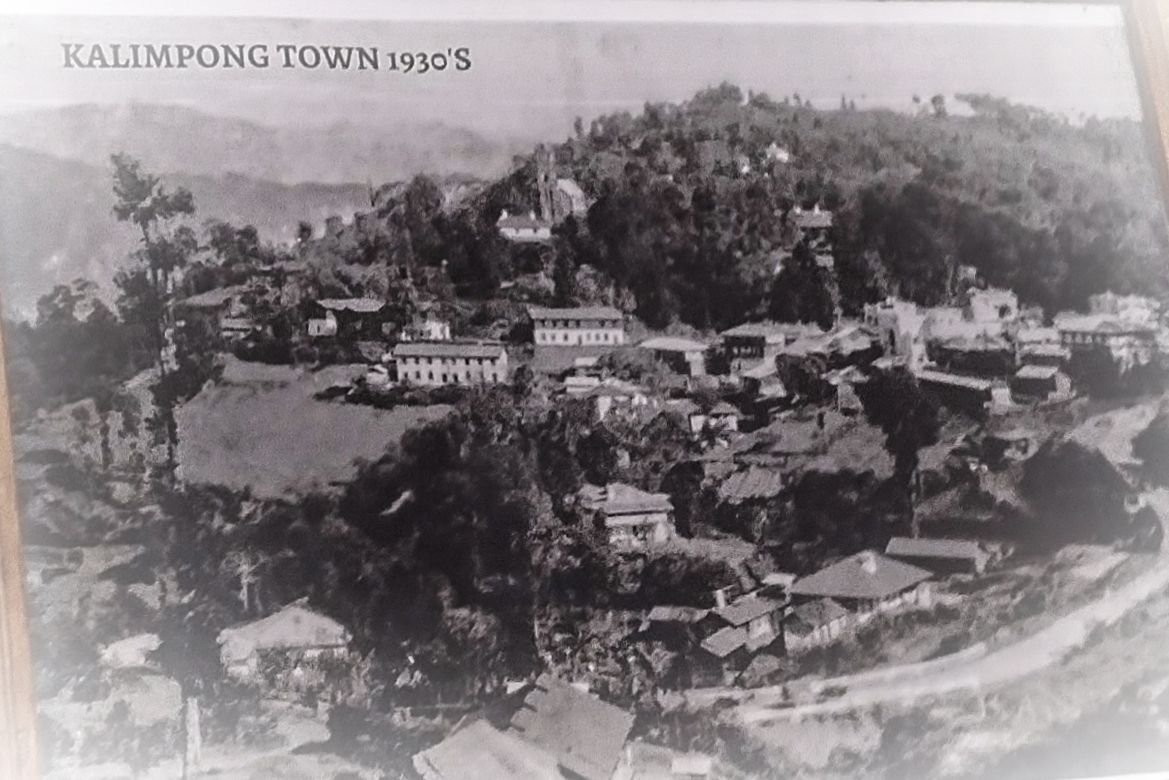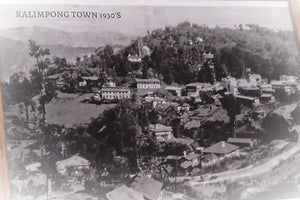 Nestled in the Eastern Himalayas, Kalimpong in the 1930s and 1940s was a quaint and peaceful town, far removed from the hustle and bustle of modernity. A significant trade hub between India and Tibet, the town thrived on commerce, culture, and community life. Taking a journey back in time, we can imagine the sights, sounds, and stories that made Kalimpong a charming hill station of its era.
Nestled in the Eastern Himalayas, Kalimpong in the 1930s and 1940s was a quaint and peaceful town, far removed from the hustle and bustle of modernity. A significant trade hub between India and Tibet, the town thrived on commerce, culture, and community life. Taking a journey back in time, we can imagine the sights, sounds, and stories that made Kalimpong a charming hill station of its era.
A Trade Hub on the Old Silk Route
Kalimpong’s strategic location made it a vibrant center for trade. The winding mule trails carried traders from Tibet, bringing wool, salt, and other goods, while Indian merchants supplied grains, textiles, and spices. The weekly haat (market) would be abuzz with activity, filled with traders, barter deals, and conversations in multiple languages—Tibetan, Nepali, Lepcha, and Hindi. The town was a melting pot of cultures, where people from different backgrounds coexisted harmoniously.

Colonial Influence and Missionary Presence
The British had a notable presence in Kalimpong during the 1930s and 1940s. Missionary schools, like Dr. Graham’s Homes, were already established, attracting students from across India and beyond. The influence of the British could be seen in the colonial-style bungalows, schools, and churches that dotted the landscape. However, despite this external influence, the indigenous communities retained their cultural identity, with traditional dances, songs, and crafts remaining an integral part of everyday life.
Dr. Graham’s Homes (1900 - Present)
Founded in 1900 by Dr. John Anderson Graham, this institution played a crucial role in educating Anglo-Indian children and others from the region. By the 1930s and 1940s, it had expanded significantly, becoming an integral part of Kalimpong’s identity.
The Influence of Scottish Missionaries
Scottish missionaries were instrumental in establishing schools, churches, and health centers. They introduced Western education while also preserving local traditions. The Macfarlane Memorial Church, built in the early 20th century, was a major landmark of that period.
A Slow-Paced Life Amidst Natural Beauty
Unlike today’s fast-moving world, life in Kalimpong in the 1930s and 1940s moved at a gentle pace. Mornings would begin with Buddhist chants from the local monasteries, followed by the ringing of temple bells and church hymns. The air was crisp, filled with the scent of pine forests and blooming rhododendrons. Small wooden houses with sloping roofs lined the hills, with locals tending to their livestock, weaving traditional fabrics, or collecting fresh produce from their terraced fields.
The Role of Kalimpong in WWII (1939-1945)
During World War II, Kalimpong saw an influx of refugees from Tibet and Bhutan. The British also used Kalimpong as a rest station for soldiers recovering from war-related injuries. The town’s remote location made it a quiet retreat from the war’s chaos.
Community and Culture
The people of Kalimpong—comprising Lepchas, Bhutias, and Nepalis—had a deep sense of community. Gatherings around the fire during chilly evenings were common, where elders would narrate folktales while sipping butter tea or tongba (a local millet-based alcoholic drink). Festivals were celebrated with great enthusiasm, featuring masked dances, traditional music, and feasts that brought everyone together.
Trade with Tibet
Kalimpong was a major center for Indo-Tibetan trade. Wool, salt, and yak tails came from Tibet, while goods like textiles, grains, and spices went from India. The town thrived on these exchanges, and Tibetan traders played a major role in shaping Kalimpong’s economy.
The Legacy of Lepcha, Bhutia, and Nepali Culture
While British and Tibetan influences were strong, Kalimpong remained deeply rooted in its indigenous traditions. The Lepcha community, in particular, played an essential role in preserving oral traditions, music, and crafts.
Transportation and Connectivity
In the 1930s and 1940s, Kalimpong was not easily accessible. The journey from the plains involved steep, winding roads, navigated by bullock carts, ponies, or even on foot. There were no cars or motorized transport, making every trip an adventure in itself. The town’s charm lay in its remoteness, making it a sanctuary for those seeking solitude and natural beauty.
Conclusion
Kalimpong in the 1930s and 1940s was a world untouched by modernity, where nature and tradition shaped daily life. The town’s deep cultural roots, bustling trade routes, and slow-paced lifestyle made it a unique Himalayan retreat. Today, while much has changed, glimpses of the past still linger in its heritage buildings, old trade routes, and the warmth of its people. A journey to Kalimpong is, in many ways, a journey through time—a place where history, culture, and nature come together in a timeless embrace.







